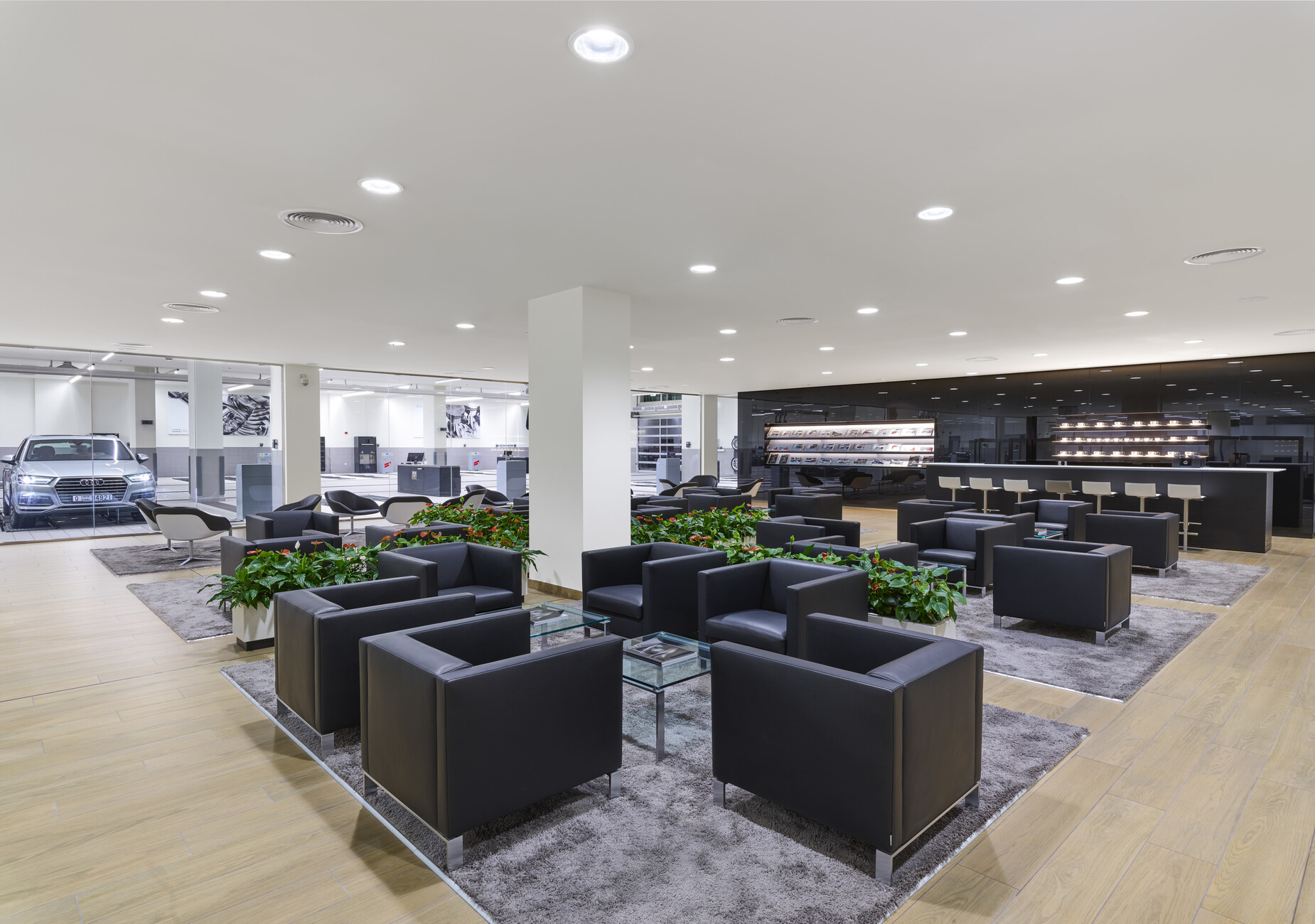Some like it warm
We no doubt all realize that we are not always rational when it comes to shopping. Our mood, the way the goods are presented, the attitude of sales staff: Any number of different aspects can subconsciously influence our purchasing patterns. The importance that light plays in this regard has been identified by experts who examined the phenomenon on behalf of lighting manufacturer Zumtobel: They studied how clients respond to different light scenarios and which client type is affected most emotionally by what lighting scenario. Zumtobel bundled these insights in its “Limbic Lighting” and “Active Light” concepts, and uses these as instruments when planning lighting for sales areas. Three examples from Dubai, Berlin and Paris show what potential the concepts have to offer.
The key to “Limbic Lighting”: the distinction between three lighting scenarios that are fine-tuned to the personal characteristics and preferences of different client groups. The three scenarios (“Balance”, “Dominance” and “Stimulance”) enable Zumtobel to align lighting planning to target group needs. For example, “Balance” is intended for customers who prefer softer lighting moods and warm colors of light. “Dominance” is destined to appeal to people who feel good in a harmonious and moderate atmosphere. “Stimulance” is tailored to people who like more contrasts. In order to realize these different scenarios locally, Zumtobel then opts for different accent lighting or more homogeneous light effects. For the study shows that if light is customized to the target group, the clients feel better, stay longer in a store, and are more willing to buy something. Be it moderate or highly contrasting, warm or cool, the three scenarios for “Limbic Lighting” that Zumtobel has developed provide a planning tool that provides the right answer for any task and sheds the right light on goods.
Cool light in the desert and gleaming in Berlin
A current example of a project that Zumtobel has planned in line with the criteria for the “Dominance” Limbic scenario: the Audi Service Center in Dubai, a complex that covers 31,000 square meters. In the waiting and reception zones, there is a pleasant, balanced light mood with homogeneously illuminated, vertical spaces and even ground-level lighting. At the reception, Zumtobel “Diamo” downlights provide precise light distribution without any dazzle or diffuse light. The waiting zone features “Panos Infinity” downlights.
How different the outlet for the clothing store “The Kooples” in Berlin, which Zumtobel designed in line with the “Stimulance” Limbic scenario and which relies on “Supersystem II” spotlights. Here contrasts play a major role, here gleaming, reflecting surfaces are in order, and the diffuse background lighting is less intensive. As in Dubai, in Berlin the light color is more in the cool spectrum of 4,000 Kelvin. This distinguishes it from the projects for the third scenario, “Balance”, which prioritizes a warmer mood with a color of light in the order of 3,000 Kelvin. This also includes soft lighting scenes and contrasts, and mid-strength general illumination. Typical of this: the high-end Parisian Pâtisserie La Durée, where the lighting must go easy on the sensitive goods for sale. Here Zumtobel deployed its “Supersystem” modular LED lighting system and the “Luxmate Emotion” light management system.
The “active light” can also favorably influence a willingness to buy. While static surroundings seem unnatural and dull, dynamic light can make a space seem more authentic and inviting. The illumination of the goods or the shop window can also vary depending on the time of day. The color of light can also be calibrated to the fabrics, packaging or foods. Individual zones within a store can be emphasized for a short period, e.g., during a sales drive.











